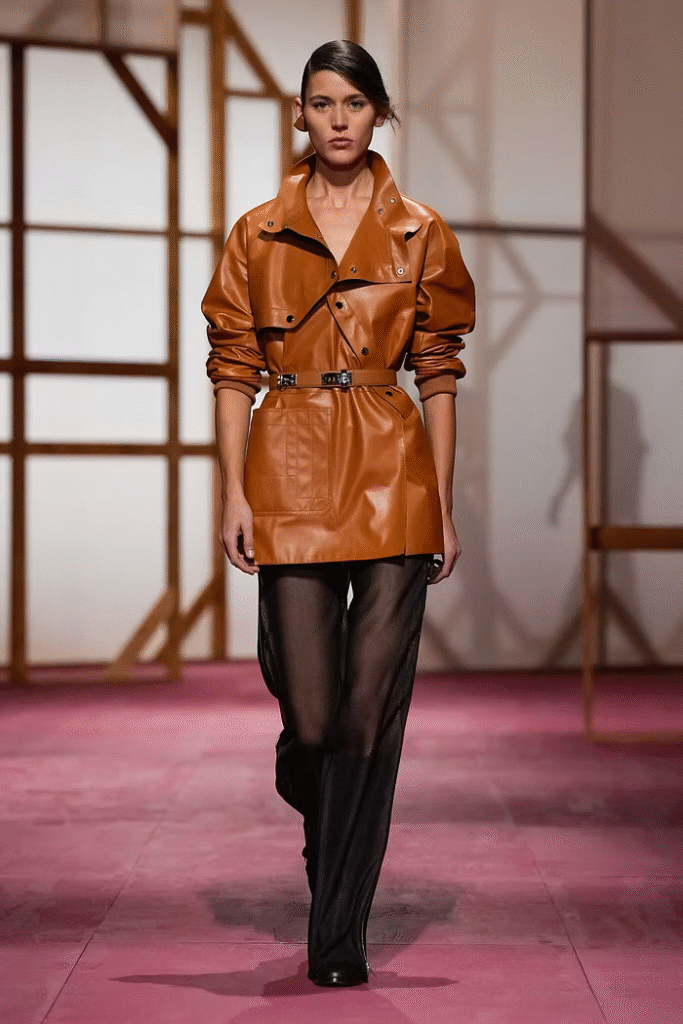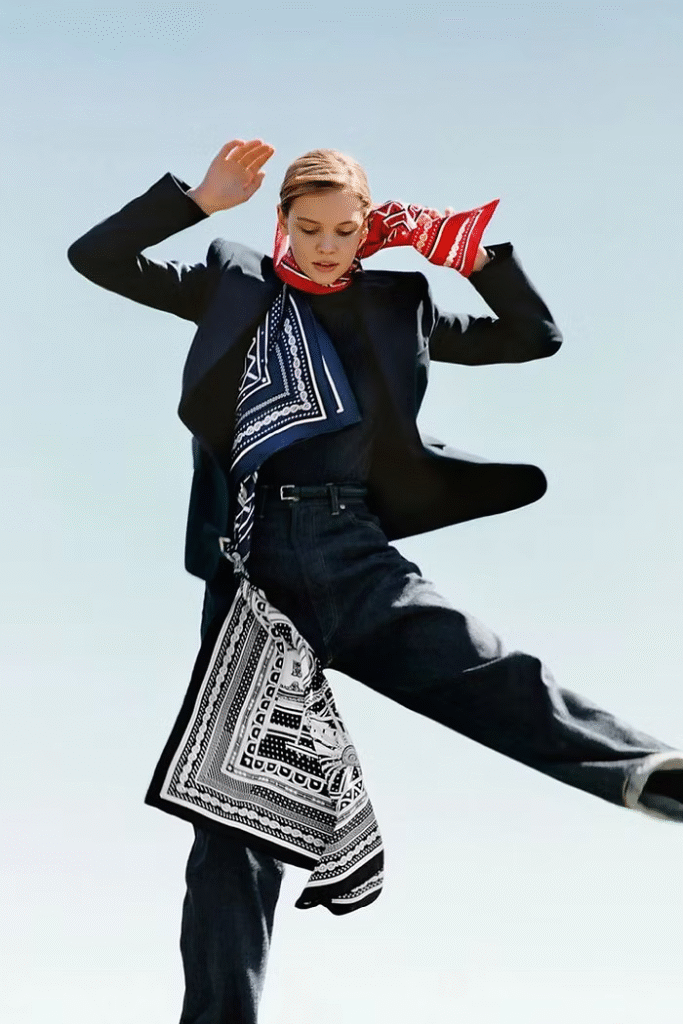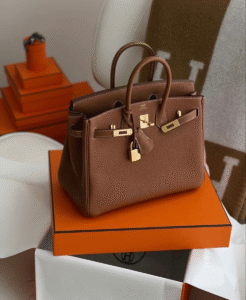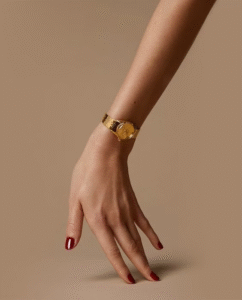
A name synonymous with sartorial greatness, Hermès has opened doors to a new realm, marking a significant milestone in its storied history. The step, which CEO Axel Dumas confirmed during the brand’s annual results presentation, indicates an aggressive move towards the most exclusive dimension of fashion. The haute couture collection, expected to be launched by 2026 or 2027, will define the brand’s legacy by embodying elevated commitment to craftsmanship and artistry while tailoring to the wants of elite clientele.
For decades, Hermès has been cherished for its timeless excellence in leather goods and saddlery. However, in recent years, the maison has made an impressive leap in ready-to-wear fashion, consolidating its presence as a key player in the luxury industry. This evolution has been reflected in its financial performance, with the clothing and accessories division generating €4.4 billion in 2024—accounting for nearly a third of the group’s total revenue and drawing closer to the €6.4 billion contributed by its iconic leather goods and saddlery. This driving factor has reinforced Hermès’ credibility as it enters the exclusive world of haute couture.
The postulation surrounding this advancing move began in September 2024, when Axel Dumas hinted at the possibility in an interview with the Financial Times. “We could do couture, we’re not ruling it out,” he stated, sparking intrigue within the fashion industry. Since then, the idea caught on within, reaching a pinnacle with the decision to apply for participation in Haute Couture Week—held biannually in Paris in January and July.
This aligns seamlessly with Hermès’ heritage of extraordinary artistry. Known for its unparalleled expertise in leather goods, silk scarves, and meticulously crafted ready-to-wear collections, the house sees haute couture as an extension of its unparalleled workmanship. “What interests us in haute couture is the know-how. We already operate at an incredible level, particularly in leather, so we thought: why not?” Dumas reiterated the idea during the presentation.
Hermès’ Evolution:
From Leather Goods to Haute Couture
Nadège Vanhee-Cybulski, the artistic director of Hermès’ women’s collections since 2014, will lead the haute couture division, ensuring that the brand’s signature elegance and understated luxury remain at the heart of its new endeavor. Production will be assigned to Hermès’ highly skilled artisans, preserving the house’s dedication to impeccable quality.

Past instances involving similar moves by luxury maisons like Gucci, Versace, Dolce & Gabbana, and Fendi have also navigated smoothly into haute couture. However, Hermès’ entry is seen as a harmonious progression rather than a retreat from its original identity, given its fiercely independent approach and meticulous craftsmanship. This expansion further reinforces its position in the ultra-high-end segment while diversifying its offerings.
Known for its meticulous attention to detail in leather goods, silk, and hand-stitched techniques, Hermès already possesses the expertise that unfolds it into a natural harmony with haute couture. This move will inevitably position it in the ultra-luxury market, where exclusivity and craftsmanship play as unrivaled priority. Serving the luxury connoisseurs, already familiar to coveted creations like the Birkin and Kelly, haute couture serves as an extension of this ethos, reinforcing Hermès’ status as one of the most exclusive maisons in the industry.
The direct and valuable consequence this move has is the creation of a halo effect, magnifying its desirability across all product lines. While not a mass-market endeavor, it will create a high-status attraction that can steer demand for high-margin categories such as accessories, fragrances, and leather goods. Industry giants like Chanel and Dior have long leveraged their couture divisions to elevate their brand perception, a strategy Hermès could employ to further solidify its dominance. What’s more is that with the increase in high-echelon wealth holders, particularly in Asia and the Middle East, the demand for bespoke, one-of-a-kind experiences continues to grow. Already proficient in catering to the needs of this clientele through custom handbag services, the maison can expand its contribution to couture, providing a complete luxury wardrobe for its most discerning customers.

Financially, haute couture introduces a new avenue for exclusivity-driven revenue, where pieces often command six-figure price tags. Amidst remarkable financial growth, with revenues surpassing €15 billion in 2024 and ready-to-wear and textiles contributing €5.3 billion—35% of total sales—the introduction of custom-fitted couture pieces is expected to enhance the fashion division while catering to an increasingly selective clientele.
The Financial Impact:
Hermès Haute Couture Expansion
Axel Dumas recalls his uncle, Hermès’ former CEO, often asserting, “I’m not a luxury company but a high-craftsmanship company,” and insisting, “I do not look at what others do.” The brand’s direction is anchored in this philosophy. Whether the luxury house enters the couture circle or not, what stands beyond doubt is that the house will not compromise on its commitment to unparalleled craftsmanship. With its storied legacy and unwavering dedication to artisanal excellence, the brand may be on the brink of redefining luxury once again.

The financial implications of such an expansion are also significant. Haute couture, though highly specialized, can be immensely profitable, with masterful creations commanding six-figure price tags. Hermès is already outperforming many of its luxury competitors, recording revenues of €7.5 billion in the first half of 2024—an impressive 12% increase, especially in contrast to declines at LVMH (-14%) and Kering (-11%). Notably, the brand has remained sturdy in China, a crucial market for luxury goods, registering 12% growth in the region. Axel Dumas remains confident in Hermès’ stronghold in China, emphasizing the unwavering loyalty of customers who value quality above all. As the brand eyes new opportunities, including an upcoming store opening in Chengdu, time will reveal whether this stability will continue as it ventures into haute couture.

The debut at Paris Haute Couture Week as a guest brand signals Hermès’ first steps toward securing its place among the official calendar of haute couture houses. Pascal Morand, executive president of the Fédération de la Haute Couture et de la Mode, noted that the brand’s arrival is a canon moment for Paris, bringing a new level of prestige to the fashion capital. With an event certain to capture widespread media attention and social media buzz, Hermès’ presence will be closely watched by fashion enthusiasts and industry insiders alike.
Unlike other maisons that have ventured into couture as part of an elaborate marketing strategy, Hermès approaches this transition with an ethos rooted in creativity and craftsmanship rather than commercial ambition. Given its commitment to vertical integration, Hermès is likely to expand its existing infrastructure by developing or acquiring specialized ateliers, just as it has done in the realms of leather goods and jewelry. This approach would be instrumental in ensuring control over production quality– ultimately breathing life into this pivotal decision and preserving its design DNA.
Over time, its ready-to-wear collections have illustrated the refined synthesis of heritage preservation and appeal to up-to-date choices of its clients guided by the artistic direction of Véronique Nichanian for menswear and Nadège Vanhee-Cybulski for womenswear. Now, with haute couture on the horizon, Hermès is poised to take this exclusivity to new heights.
Challenges and Opportunities in the Ultra-Luxury Market
Hermès’ entry into the world of haute couture is bound to come with its own set of challenges. Notable houses like Chanel, Dior, and Givenchy have controlled the landscape of high fashion, each establishing a deep-rooted tradition of crafting pieces of visionary charm. However, Hermès’ reputation for unparalleled craftsmanship and distinctive expertise may allow it to gradually carve out a space within this highly selective industry.

Axel Dumas acknowledges the hurdles ahead but remains optimistic, even injecting a note of humor into his reflections. “What is certain is that it will bring us problems, but also pleasure,” he remarked, emphasizing that the maison intends to launch this ambitious new venture between 2026 and 2027 while upholding its exacting standards of excellence.
The expansion’s attempt to reinvent the landscape of haute couture while reinforcing the brand’s illustrious heritage is a bold move. However, gaining official acknowledgment within this realm is hardly a simple undertaking. The Fédération de la Haute Couture et de la Mode enforces stringent criteria for any house seeking the coveted haute couture designation. Among these requirements, garments must be made-to-order for private clients, necessitate at least one fitting, and be produced in a dedicated atelier in Paris. Additionally, the house must employ at least 15 full-time staff members and 20 technical artisans, while presenting a minimum of 50 original designs—spanning both day and evening wear—twice a year. Living up to these standards will demand a significant investment, and more than that, a distinctive ability to maintain originality with increasing innovative inclinations.
While entering haute couture presents undeniable challenges, it also offers Hermès an extraordinary opportunity to push the boundaries of craftsmanship and artistry, cementing its status as a titan of prestige and refinement.
What Makes Hermès Haute Couture Stand Out?
The timing of this move accentuates the growing demand for personalized luxury experiences. A recent McKinsey survey found that 62% of luxury consumers express interest in bespoke services, highlighting the potential for haute couture to drive deeper brand engagement. By embracing couture-crafted fashion, Hermès creates a ground for itself at the zenith of exclusivity, offering an elevated form of luxury that aligns with its cultural essence.

Hermès has consistently distinguished itself as a paragon of discretion and refinement, forging a position unique from conglomerates like LVMH and Kering, which have ambitiously expanded into eyewear, hospitality, and other sectors. Instead, Hermès has focused on deepening its expertise within its core categories. By entering haute couture, the brand reinforces its position in the ultra-high-end segment while further diversifying its offerings.
As the fashion world awaits with great interest and hope the debut of Hermès haute couture, what remains indisputable is this: this move will etch Hermès’ name in the highest esteem, among the most revered names in fashion history. The industry experts and consumers yearn for a distinguishing stylistic ingenuity, which Hermès gives hope for.
With an unwavering commitment to craftsmanship and artistry, Hermès can showcase its expertise in material innovation and craftsmanship, much like Chanel with its couture collections or Fendi with its fur artistry. The decision aligns seamlessly with Hermès’ heritage of artisanal excellence. More than a commercial venture, this is an artistic quest where in an era of ever-evolving luxury, true craftsmanship remains the ultimate expression of prestige.








